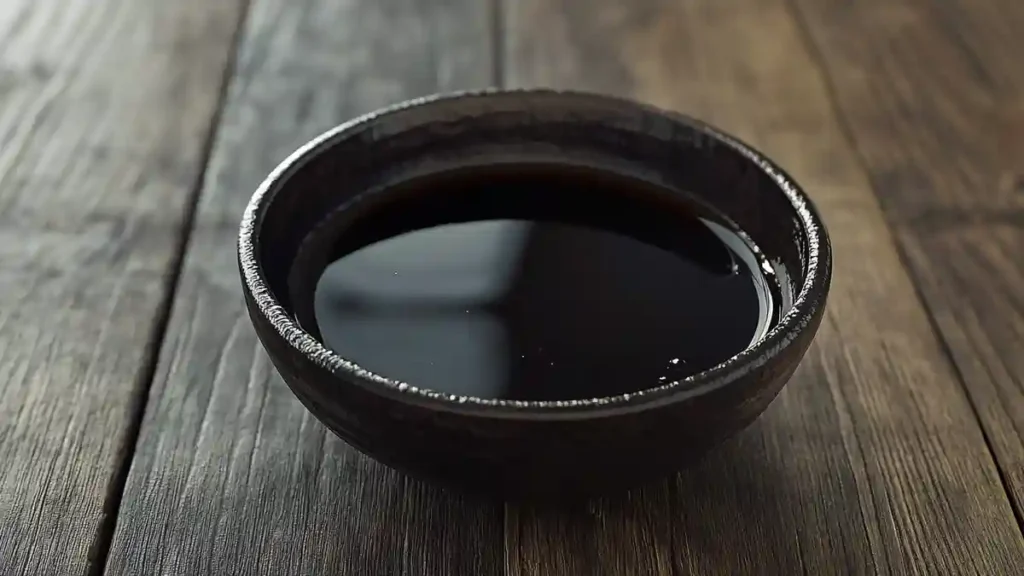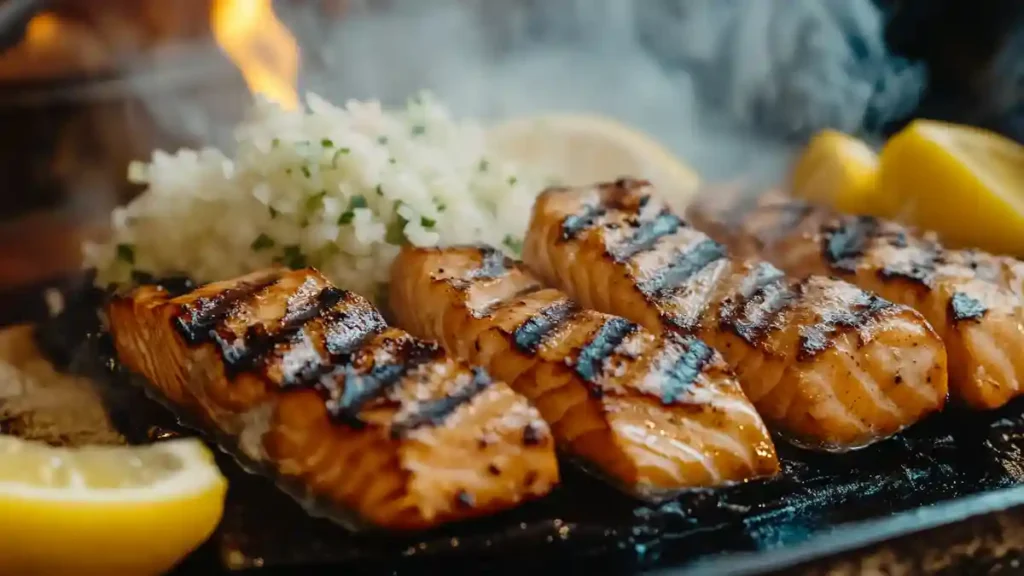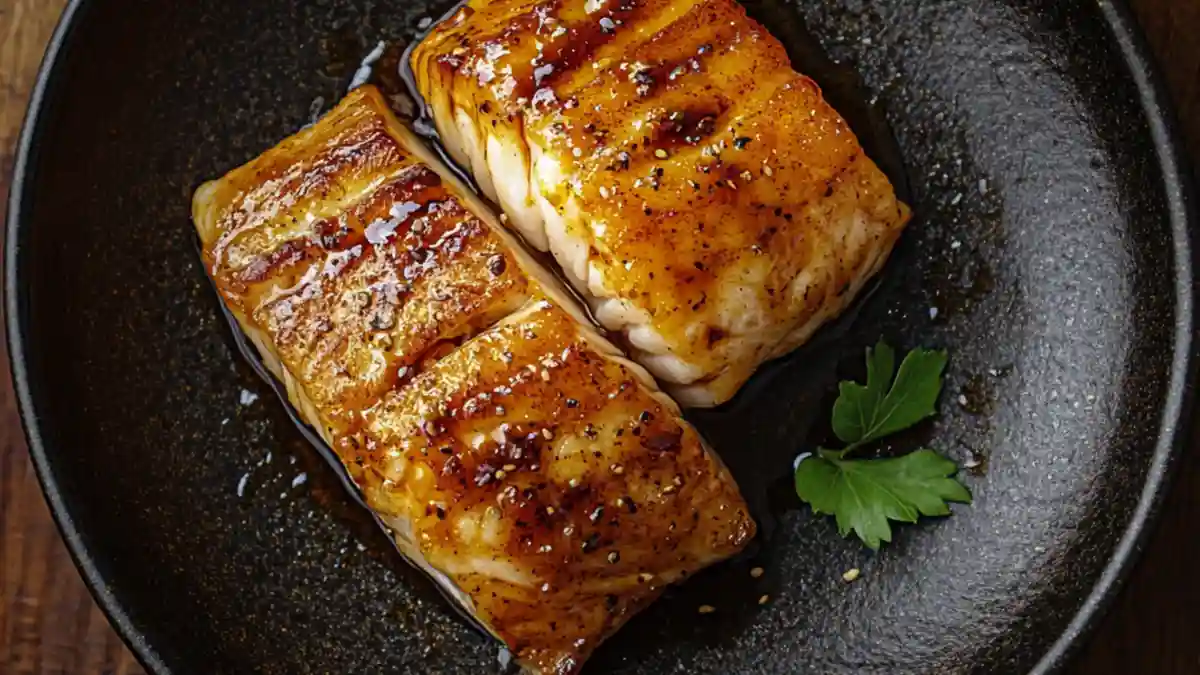ANNONCE
Among the rich traditions of Japanese cuisine, salmon kama stands as a testament to the culture’s deep appreciation for utilizing every part of an ingredient to its fullest potential. This guide explores the culinary heritage, preparation methods, and essential techniques for mastering this exquisite dish in your own kitchen.
Salmon Kama: A Rich Cultural Heritage
The story of salmon kama is deeply woven into the fabric of Japanese culinary tradition. The term “kama” (カマ) refers to the collar section of the fish, located just behind the gills. During Japan’s Edo period (1603-1867), fish merchants discovered that this often-overlooked cut contained some of the most flavorful and tender meat on the entire fish. This discovery transformed salmon kama from a humble cut into a prized delicacy, often reserved for special occasions and high-end dining establishments.
ANNONCE
The popularity of salmon kama reflects the Japanese principle of minimizing waste and maximizing the potential of each ingredient. This respectful approach to food preparation has influenced chefs and home cooks worldwide, contributing to modern conversations about sustainable cooking practices and whole-animal utilization.
Understanding the Cut of Salmon Kama
Salmon kama’s distinctive Y-shaped bone structure and generous distribution of fatty tissue set it apart from other cuts. This unique composition results in exceptionally tender meat with a rich, buttery flavor profile. The high concentration of healthy fats, particularly omega-3 fatty acids, makes it not only delicious but also nutritionally valuable.
The collar cut typically includes a perfect balance of lean meat and fatty tissue, creating a complex flavor profile that has earned it a dedicated following among seafood enthusiasts. When properly prepared, the meat becomes incredibly tender, while the skin can be crisped to perfection.
ANNONCE
Step-by-Step Preparation Guide of Salmon Kama
Ingredients
- 2 salmon kama pieces (approximately 6-8 oz each)
- 3 tablespoons soy sauce
- 2 tablespoons mirin
- 1 tablespoon sake
- 1 teaspoon sea salt
- 1 lemon, cut into wedges for serving
- Optional: grated daikon radish for garnish
Equipment Needed
- Grill or broiler
- Sharp knife
- Kitchen scissors
- Tongs
- Small bowl for marinade
- Paper towels
- Basting brush
- Aluminum foil
Preparation Steps
- Step 1: Initial Preparation (10 minutes)
- Remove salmon kama from refrigerator 30 minutes before cooking
- Rinse pieces under cold water
- Pat thoroughly dry with paper towels
- Using a sharp knife, score the skin in a crosshatch pattern (cuts about ¼ inch deep)
- Season both sides with sea salt
- Step 2: Marinade Preparation (5 minutes)
- In a small bowl, combine soy sauce, mirin, and sake
- Mix well until fully combined
- Brush marinade generously over both sides of the fish
- Let marinate for 20-30 minutes (no longer to prevent over-salting)
ANNONCE

- Step 3: Cooking Setup (5 minutes)
- Preheat grill or broiler to medium-high heat (approximately 375°F/190°C)
- If using a broiler, line the pan with aluminum foil for easy cleanup
- Oil the grill grates or foil lightly to prevent sticking

ANNONCE
- Step4: Cooking Process (12-15 minutes)
- Place salmon kama skin-side up initially
- Grill/broil for 6-7 minutes
- Carefully flip using tongs
- Brush with remaining marinade
- Cook for another 6-7 minutes until skin is crispy and flesh is opaque
- Internal temperature should reach 145°F (63°C)
- Step 5: Final Steps (5 minutes)
- Remove from heat
- Let rest for 3-5 minutes
- Garnish with grated daikon if using
- Serve immediately with lemon wedges

Visual Indicators for Doneness
- Skin should be crispy and lightly charred
- Flesh should be opaque throughout
- Fish should flake easily with a fork
- Collagen around bones should be soft and translucent
Tips for Perfect Results
- Don’t skip the scoring step – it ensures even cooking and prevents curling
- Watch carefully during cooking as the high fat content can cause flare-ups
- If the skin starts to burn but the inside isn’t done, move to indirect heat or lower temperature
- For extra crispy skin, pat dry again just before cooking
- Don’t move the fish too much during cooking to prevent sticking
Traditional Japanese preparation typically follows these steps precisely to highlight the natural flavors of the fish while achieving the perfect balance between crispy skin and tender, moist flesh. The cooking process might vary slightly depending on the size of your cuts and specific heat source, but these basic principles remain the same.
Advanced Preparation Methods
Beyond the basic preparation, several variations have emerged that showcase the versatility of salmon kama. One popular modern interpretation incorporates white miso paste, creating a sweet and savory glaze that caramelizes beautifully during cooking. Another contemporary approach draws inspiration from Korean cuisine, utilizing gochujang (fermented red chili paste) for a spicy twist on the traditional preparation.
ANNONCE
For optimal results, bringing the fish to room temperature before cooking ensures even heat distribution. This step, combined with proper moisture management through careful marination timing and thorough drying before cooking, helps achieve the perfect texture. Expert chefs recommend using indirect heat for larger pieces, which prevents the exterior from burning while ensuring the interior cooks thoroughly.
Storage and Serving Recommendations
Fresh salmon kama should be used within 1-2 days when stored in the refrigerator. If freezing is necessary, proper wrapping can maintain quality for up to three months. Cooked leftovers can be stored for 2-3 days, though the texture is best when served fresh.
Traditional accompaniments include steamed white rice, miso soup, and pickled vegetables (tsukemono). The dish is often garnished with grated daikon radish and a wedge of lemon or sudachi citrus, which help cut through the richness of the fish. Modern interpretations might pair salmon kama with Asian-inspired slaws or fresh herb salads for a contemporary twist.
ANNONCE
Nutritional Benefits
Salmon kama offers significant nutritional benefits, being rich in omega-3 fatty acids, high-quality protein, and essential vitamins and minerals. A typical serving provides approximately 320 calories, with 34 grams of protein and 18 grams of healthy fats. The high concentration of omega-3s supports heart and brain health, while the protein content makes it an excellent choice for various dietary preferences.
Troubleshooting Common Challenges
Several common issues may arise when preparing salmon kama. Fish sticking to the cooking surface can be prevented by ensuring the grill or pan is properly heated and cleaned before use. Uneven cooking, another frequent concern, is best addressed by cutting pieces to similar sizes and using a two-zone cooking setup when grilling.
The most critical aspect of preparation is avoiding overcooking, which can result in dry, tough meat. Maintaining proper heat levels and watching for visual cues of doneness helps achieve the desired tender, moist result. The flesh should be opaque and flake easily when done, while retaining its succulence.
ANNONCE
Cultural Context and Modern Applications
In traditional Japanese dining, salmon kama exemplifies the culture’s emphasis on seasonal ingredients and minimalist preparation methods that highlight natural flavors. Its growing popularity in Western cuisine has led to creative interpretations while maintaining respect for its cultural origins.
Modern chefs often incorporate salmon kama into fusion dishes, demonstrating its versatility beyond traditional Japanese preparations. Whether served in a traditional setting or reimagined with contemporary flavors, the key to success lies in understanding and respecting the fundamental characteristics that make this cut special.

Salmon Kama: Master Japanese Fish Collar Preparation
Equipment
- Grill or broiler
- Sharp knife
- Kitchen scissors
- Tongs
- Small bowl
- Paper towels
- Basting brush
- Aluminum foil
Ingredients
Salmon Kama
- 2 pieces salmon kama approximately 6-8 oz each
- 3 tablespoons soy sauce
- 2 tablespoons mirin
- 1 tablespoon sake
- 1 teaspoon sea salt
- 1 lemon cut into wedges for serving
- grated daikon radish optional, for garnish
Instructions
- Remove salmon kama from refrigerator 30 minutes before cooking.
- Rinse pieces under cold water and pat thoroughly dry with paper towels.
- Using a sharp knife, score the skin in a crosshatch pattern (cuts about ¼ inch deep).
- Season both sides with sea salt.
- In a small bowl, combine soy sauce, mirin, and sake. Mix well.
- Brush marinade generously over both sides of the fish and let marinate for 20-30 minutes.
- Preheat grill or broiler to medium-high heat (approximately 375°F/190°C).
- If using a broiler, line the pan with aluminum foil for easy cleanup. Lightly oil the grill grates or foil to prevent sticking.
- Place salmon kama skin-side up initially and grill/broil for 6-7 minutes.
- Carefully flip using tongs, brush with remaining marinade, and cook for another 6-7 minutes until skin is crispy and flesh is opaque.
- Remove from heat and let rest for 3-5 minutes.
- Garnish with grated daikon if using and serve immediately with lemon wedges.
Notes
Frequently Asked Questions
What is salmon kama?
Salmon kama refers to the collar of the salmon, which is the fatty, flavorful section located between the head and the body. This cut is prized in Japanese cuisine for its rich taste and tender texture. Since this part of the fish contains a higher fat content, it remains juicy and soft when cooked. Salmon kama is often grilled or broiled with simple seasonings like salt or soy sauce to highlight its natural umami flavor. It is a delicacy in many Japanese restaurants and is commonly enjoyed for dinner alongside rice, miso soup, and pickled vegetables.
ANNONCE
What part of the fish is the collar?
The collar is the section of the fish located just behind the gills and in front of the belly. It includes part of the pectoral fin and the surrounding meat, which is known for its tenderness and juiciness. This cut is particularly popular in Japanese cuisine, where it is prepared as “kama” and cooked over an open flame or under a broiler. The high fat content of the collar gives it a rich, buttery texture, making it a sought-after piece despite being less common in Western markets. If you’re wondering where to buy salmon collar, it can often be found at Asian grocery stores, specialty seafood markets, or ordered from Japanese restaurants.
Is salmon collar cheap?
Compared to other cuts of salmon, the collar is generally more affordable because it is often considered a byproduct of filleting. The salmon collar price varies depending on the market, the type of salmon, and whether it is fresh or frozen. However, because it is a lesser-known cut, it is usually more budget-friendly than fillets or steaks while still offering a high-quality taste. Many seafood lovers consider it a hidden gem because of its flavor and texture. If you’re looking for salmon kama near me, checking local Japanese restaurants or fish markets is a great option.
How to eat salmon kama?
Eating salmon kama is simple but can require some technique due to the bones. The best way to enjoy it is by using chopsticks or your hands to gently pull the tender meat away from the bone. The meat around the collar is fatty and soft, making it easy to separate. Some prefer dipping it in ponzu sauce or squeezing fresh lemon over it to enhance the flavor. When served at restaurants, it is often accompanied by a bowl of rice and pickled vegetables for a complete meal. If you want to try making it at home, looking up a salmon kama recipe can help guide you through the cooking process.
ANNONCE
How to cook salmon collars?
The most common way to cook salmon kama is by grilling or broiling, which helps render the fat and crisp up the skin while keeping the inside moist. To prepare, simply season the collar with salt and let it sit for a few minutes to enhance the flavor. Then, place it on a grill or under a broiler, skin-side up, and cook until the skin is crispy and the meat is flaky. Some recipes use soy sauce, mirin, and ginger for added depth of flavor. Whether cooked on an open flame or in an oven, salmon kama Japanese style is simple yet incredibly delicious.
Is frozen salmon as good as fresh?
Frozen salmon, including salmon kama, can be just as good as fresh if properly handled. Many seafood suppliers flash-freeze salmon immediately after it is caught to preserve its freshness and quality. The key to maintaining flavor and texture is thawing it properly—slowly in the refrigerator rather than quickly at room temperature. Frozen salmon kama calories remain the same as fresh, and it can still be used in any salmon kama recipe without losing its rich taste. If fresh salmon collar isn’t available, frozen options from reputable sources can be a great alternative.

